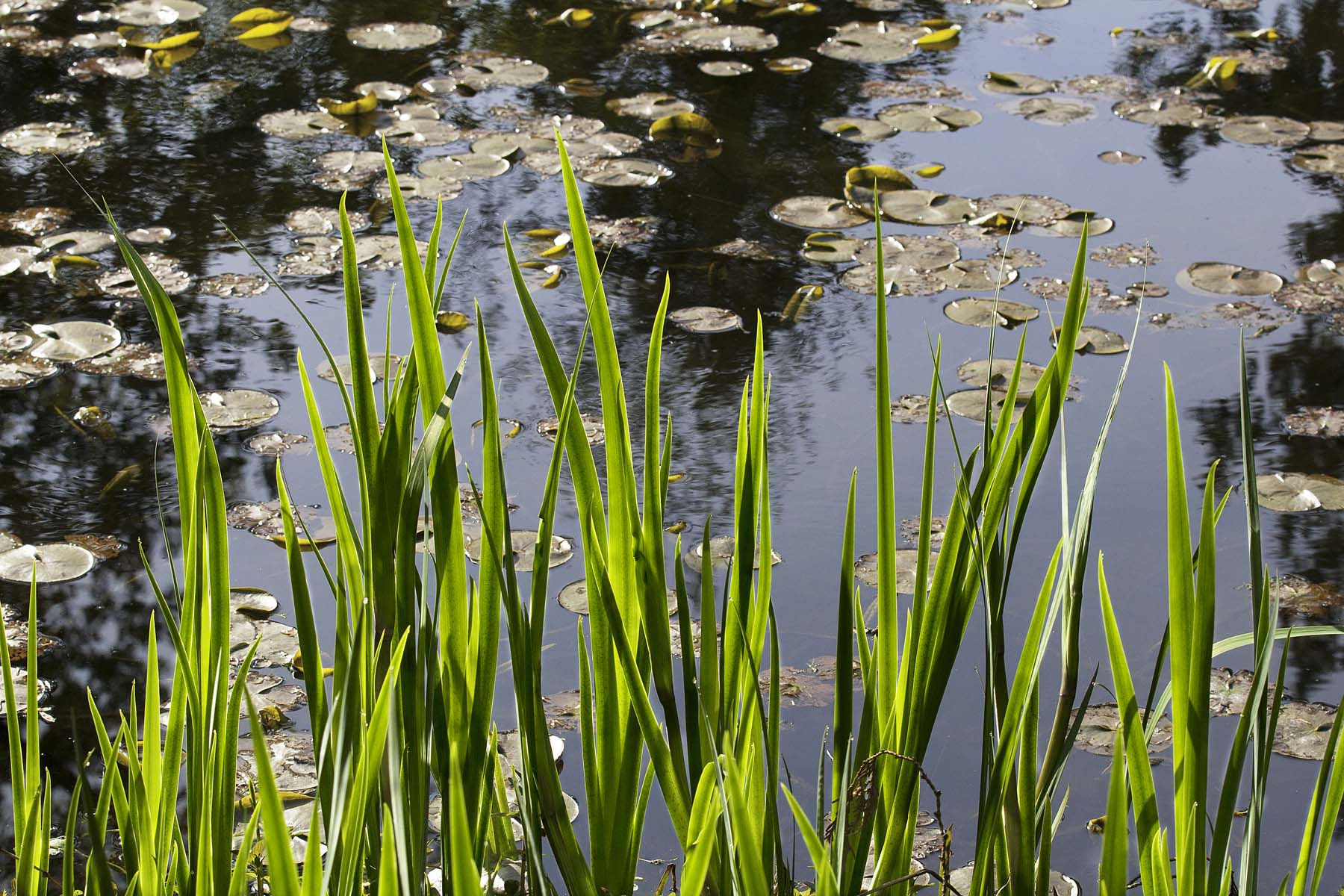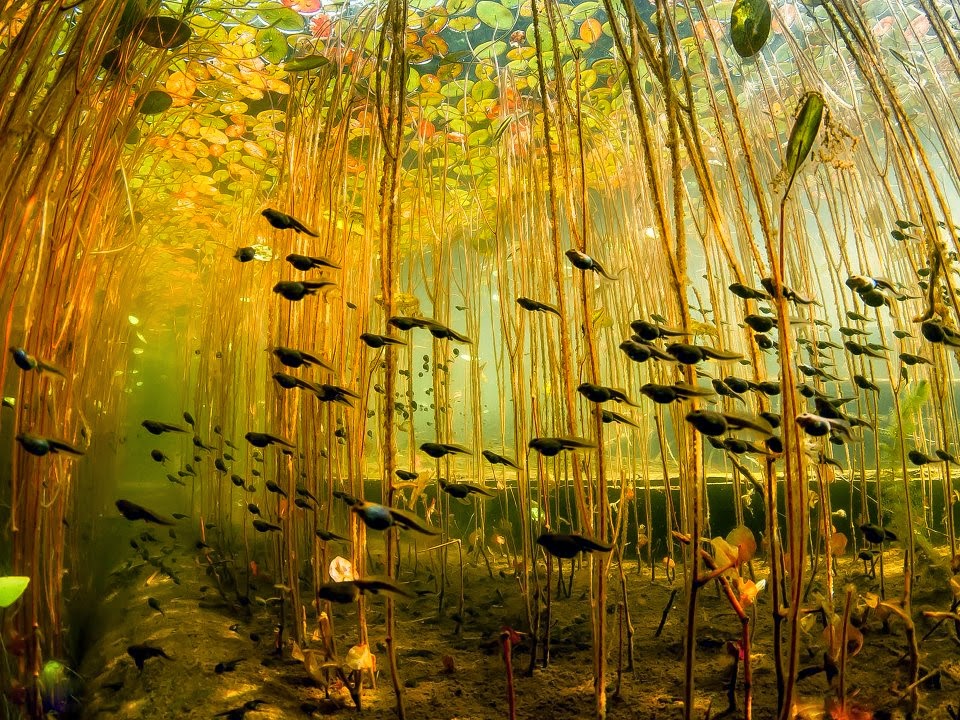Photography, like life, is a matter of point of view. And sometimes the best photos are taken by looking at something from a unique perspective. For instance, the other day I was trying to emulate a photographer I admire very much by the name of Denis Colette. His images are magnificent, as I have commented here before, and I would like to have his ability to capture color and pattern.
A couple of years ago I had photographed a pond in Queen Elizabeth park here in Vancouver. I took this picture along the shore and although interesting it is not what I was after. So I looked at the other images I took on that outing that might be amenable to a treatment reminiscent of Denis’ images. There was one of the water and lily pads with reflected patches of blue sky that looked promising.
It was sharp and colorful. I used OnOne software to basically increase the color and sharpness to the point of becoming more pattern than photograph. It worked really well, in my opinion, and I am happy with the result. I have not created a large print yet but it is on my list of projects. The problem is that the list gets longer with every passing day.
Whenever I complete an image, well, I never really complete any image, I look at it and think about it for weeks afterwards. And every time I look at it I see things I want to change. I also dwell on what I could have done to improve the image. I try to learn from the work so that I can do it better.
So looking at this image, it is nice. But cluttered. Maybe I should have zoomed in more to make the lily pads larger. Maybe I could have gotten higher? How about lower? I was looking for a different perspective but I was thinking very much “in the box”.
This is when I came across the work of Eiko Jones. And it was an inspiration. What if I carefully lowered my camera, with suitable protective gear, into the pond and photographed the lily pads from below! Now that was changing the point of view. Just think of it! Well, no, you don’t have to think about it because we can look at it. Eiko has done just this thing in another pond, but it could have been my pond.
Now I could not have done this; I don’t have the necessary gear. But it is a demonstration of how we can miss a wonderful photograph by not thinking creatively enough about how we might stage it. Think of the possibilities if you were to do a photo essay of a running river. Pictures of the water fall; slow shutter speed and fast; low angle with big rocks in the foreground; top of the water fall looking down; climb a tree for a unique angle; and go under the water to get images of the trout as they mill about in a deep dark green pool.
It is interesting that this is not a technique in the sense of post processing. It is a different idea for how to view a subject. It is an example of how we must open our minds whenever we see a photograph but before we take the picture. What point of view am I going to project in my final image?
Since I saw this image, and Eiko’s other images, my mind has been playing with all kinds of possibilities I had not been contemplating before. This is the value of searching out the work of others. We can learn from each other and in the process all of us can take better pictures.





